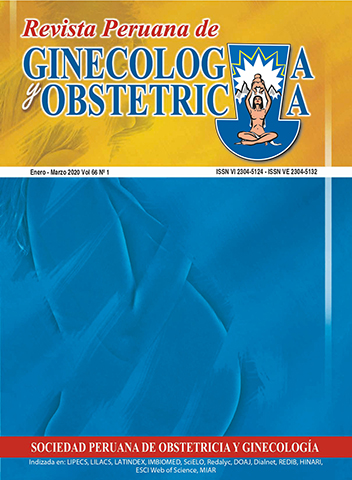Prognostic utility of cervical length and uterine artery pulsatility index for imminent preterm delivery in symptomatic patients
DOI:
https://doi.org/10.31403/rpgo.v66i2228Abstract
Objective: To establish the prognostic usefulness of cervical length and uterine artery pulsatility index for imminent preterm delivery in symptomatic patients. Design: Case-control study. Setting: Central Hospital "Dr. Urquinaona ", Maracaibo, Venezuela. Participants: Patients with preterm delivery within 7 days (group A) and pregnant women with preterm delivery within more than 7 days (group B). Methods: Cervical length and uterine artery pulsatility index were determined at hospital admission and all were followed until delivery. Main outcome measures: General characteristics, cervical length, uterine artery pulsatility index, imminent preterm delivery, and prognostic efficacy. Results: 119 participants were assigned to group A and 362 patients to group B. Cervical length was lower in group A, and the uterine artery pulsatility index was higher compared with group B (p <0.0001). Cervical length showed an area under the curve of 0.972, while the uterine artery pulsatility index presented an area under the curve of 0.843. The difference between the two measurements was significantly different between groups A and B (p <0.001). Combination of both measurements showed a significantly lower value in prediction capacity (0.987) compared with both measurements individually (p <0.0001).
Conclusion: The combined use of cervical length and pulsatility index of the uterine artery was useful in the prediction of imminent preterm delivery in symptomatic patients.
















